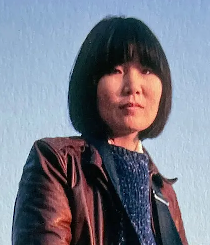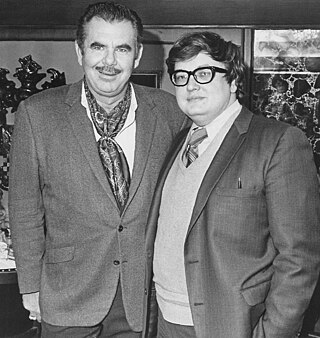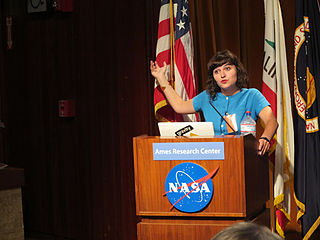Multimedia is a form of communication that uses a combination of different content forms such as writing, audio, images, animations, or video into a single interactive presentation, in contrast to traditional mass media, such as printed material or audio recordings, which features little to no interaction between users. Popular examples of multimedia include video podcasts, audio slideshows and animated videos. Multimedia also contains the principles and application of effective interactive communication such as the building blocks of software, hardware, and other technologies. The five main building blocks of multimedia are text, image, audio, video, and animation.

Humanities are academic disciplines that study aspects of human society and culture, including the fundamental questions asked by humans. During the Renaissance, the term 'humanities' referred to the study of classical literature and language, as opposed to the study of religion or 'divinity.' The study of the humanities was a key part of the secular curriculum in universities at the time. Today, the humanities are more frequently defined as any fields of study outside of natural sciences, social sciences, formal sciences, and applied sciences. They use methods that are primarily critical, speculative, or interpretative and have a significant historical element—as distinguished from the mainly empirical approaches of science.

An audience is a group of people who participate in a show or encounter a work of art, literature, theatre, music, video games, or academics in any medium. Audience members participate in different ways in different kinds of art. Some events invite overt audience participation and others allow only modest clapping and criticism and reception.

Museology or museum studies is the study of museums. It explores the history of museums and their role in society, as well as the activities they engage in, including curating, preservation, public programming, and education.

Protest art is the creative works produced by activists and social movements. It is a traditional means of communication, utilized by a cross section of collectives and the state to inform and persuade citizens. Protest art helps arouse base emotions in their audiences, and in return may increase the climate of tension and create new opportunities to dissent. Since art, unlike other forms of dissent, take few financial resources, less financially able groups and parties can rely more on performance art and street art as an affordable tactic.
Sonia Dawn Boyce, is a British Afro-Caribbean artist and educator, living and working in London. She is a Professor of Black Art and Design at University of the Arts London. Boyce's research interests explore art as a social practice and the critical and contextual debates that arise from this area of study. Boyce has been closely collaborating with other artists since 1990 with a focus on collaborative work, frequently involving improvisation and unplanned performative actions on the part of her collaborators. Boyce's work involves a variety of media, such as drawing, print, photography, video, and sound. Her art explores "the relationship between sound and memory, the dynamics of space, and incorporating the spectator". To date, Boyce has taught Fine Art studio practice for more than 30 years in several art colleges across the UK.

Theresa Hak Kyung Cha was an American novelist, producer, director, and artist of South Korean origin, best known for her 1982 novel, Dictée. Considered an avant-garde artist, Cha was fluent in Korean, English, and French. The main body of Cha's work is "looking for the roots of language before it is born on the tip of the tongue." Cha's practice experiments with language through repetition, manipulation, reduction, and isolation, exploring the ways in which language marks one's identity, in unstable and multiple expressions. Cha's interdisciplinary background was clearly evident in Dictée, which experiments with juxtaposition and hypertext of both print and visual media. Cha's Dictée is frequently taught in contemporary literature classes including women's literature.
Critical design uses design fiction and speculative design proposals to challenge assumptions and conceptions about the role objects play in everyday life. Critical design plays a similar role to product design, but does not emphasize an object's commercial purpose or physical utility. It is mainly used to share a critical perspective or inspire debate, while increasing awareness of social, cultural, or ethical issues in the eyes of the public. Critical design was popularized by Anthony Dunne and Fiona Raby through their firm, Dunne & Raby.

Founded as the Brighton School of Art in 1859, the University of Brighton School of Art and Media is an organisational part of the University of Brighton, with courses in the creative arts, visual communication, media, craft and fashion and textile design.

Film criticism is the analysis and evaluation of films and the film medium. In general, film criticism can be divided into two categories: journalistic criticism that appears regularly in newspapers, magazines and other popular mass-media outlets; and academic criticism by film scholars who are informed by film theory and are published in academic journals. Academic film criticism rarely takes the form of a review; instead it is more likely to analyse the film and its place in the history of its genre or in the whole of film history.
Participatory art is an approach to making art which engages public participation in the creative process, letting them become co-authors, editors, and observers of the work. This type of art is incomplete without viewers' physical interaction. It intends to challenge the dominant form of making art in the West, in which a small class of professional artists make the art while the public takes on the role of passive observer or consumer, i.e., buying the work of the professionals in the marketplace. Commended works by advocates who popularized participatory art include Augusto Boal in his Theater of the Oppressed, as well as Allan Kaprow in happenings.
Noor Afshan Mirza and Brad Butler are a London-based artistic duo, working together since the late 1990s, after meeting as students at the Royal College of Art.

Nelly Ben Hayoun is a French designer, artist and filmmaker. Born in Valence, Drôme, France, she now resides in London, United Kingdom. She serves on the Advisory Council of METI and is the designer of experiences at the SETI Institute. She is also an exhibitor and keynote speaker who has worked with museums and design centres across the world.

Adrian Margaret Smith Piper is an American conceptual artist and Kantian philosopher. Her work addresses how and why those involved in more than one discipline may experience professional ostracism, otherness, racial passing, and racism by using various traditional and non-traditional media to provoke self-analysis. She uses reflection on her own career as an example.

Critical making refers to the hands-on productive activities that link digital technologies to society. It was invented to bridge the gap between creative, physical, and conceptual exploration. The purpose of critical making resides in the learning extracted from the process of making rather than the experience derived from the finished output. The term "critical making" was popularized by Matt Ratto, an associate professor at the University of Toronto. Ratto describes one of the main goals of critical making as a way "to use material forms of engagement with technologies to supplement and extend critical reflection and, in doing so, to reconnect our lived experiences with technologies to social and conceptual critique." "Critical making", as defined by practitioners like Matt Ratto and Stephen Hockema, "is an elision of two typically disconnected modes of engagement in the world — "critical thinking," often considered as abstract, explicit, linguistically based, internal and cognitively individualistic; and "making," typically understood as tacit, embodied, external, and community-oriented."
Brighton Photo Biennial (BPB), now known as Photoworks Festival, is a month-long festival of photography in Brighton, England, produced by Photoworks. The festival began in 2003 and is often held in October. It plays host to curated exhibitions across the city of Brighton and Hove in gallery and public spaces. Previous editions have been curated by Jeremy Millar (2003), Gilane Tawadros (2006), Julian Stallabrass (2008), Martin Parr (2010) and Photoworks (2012). Brighton Photo Biennial announced its merger with Photoworks in 2006 and in 2020 its name was changed to Photoworks Festival.
Social practice or socially engaged practice is an art medium that focuses on engagement through human interaction and social discourse. Social practice goes by many names, including relational aesthetics, new genre public art, socially engaged art, dialogical art, and participatory art. Social practice work focuses on the interaction between the audience, social systems, and the artist or artwork through aesthetics, ethics, collaboration, methodology, antagonism, media strategies, and/or social activism.
Rebecca Salter is a British abstract artist who lives and works in London. Previously elected Keeper in 2017, she was elected as the first female President of the Royal Academy of Arts in London on 10 December 2019. Formerly a ceramicist, she is best known as painter and printmaker. Salter specialises in woodblock printing, combining Western and Eastern traditions. She has written two books on Japanese wood blocks: Japanese Woodblock (2001) and Japanese Popular Prints: From Votive Slips to Playing Cards (2006).

Brian Lobel is an artist and scholar based in the United Kingdom. He is a professor of Theatre and Performance at Rose Bruford College. His work has been featured at the Sydney Opera House, the National Theatre in London, and Harvard Medical School. He is known for his Live Art practice based in 'candid, personal interactions', and his work dealing with themes, issues and experiences around cancer.
Speculative design is a design practice that is concerned with future design proposals of a critical nature. The term "speculative design" was popularised by Anthony Dunne and Fiona Raby as a subsidiary of critical design. The aim is not to present commercially-driven design proposals but to design proposals that identify and debate crucial issues that might happen in the future. Speculative design is concerned with future consequences and implications of the relationship between science, technology, and humans. It problematizes this relation by proposing provocative future design scenarios where technology and design implications are accentuated. These provocative design proposals are meant to trigger the debate about future challenges. Speculative design proposals might seem subversive and irreverent in nature as they are meant to initiate discussions not to be market products.










